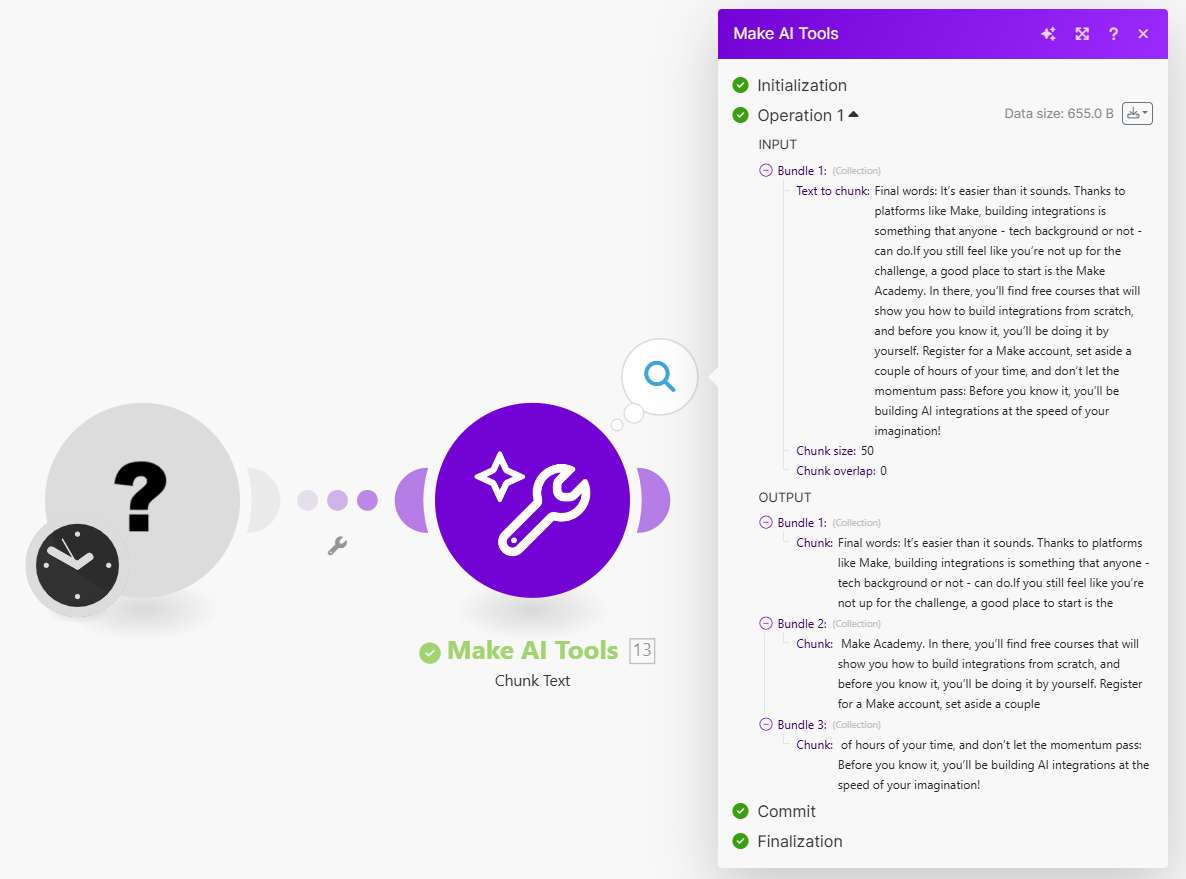Make AI Tools
We developed the Make AI Tools app to make AI more accessible for our users. Our AI tools simplify the process by eliminating the need for complex prompts and the necessity of setting up AI accounts with third-party services.
Note
Make AI Tools is currently in closed beta - only available to invited guests.
Basic AI
Evaluates the tone of a text and determines if it's positive, neutral, or negative.
Text to analyze | Enter text to analyze. The module will return whether the text is positive, neutral, or negative. |
Return a description of the sentiment? | Select Yes or No. |
Example:
In this example, we will show how you can use the Analyze Sentiment module to evaluate feedback from a customer.
Imagine you have received a feedback ticket or email in a customer service application you are using, such as Freshdesk or Zendesk. You can have the Analyze Sentiment module evaluate the tone of the text, determine if it's positive, negative, or neutral, and then you can use that information to sort your feedback to help you strategize to improve your results.
To build your scenario, your first module will get the information from your customer service application. You might choose Freshdesk - Search/List Tickets or Zendesk - List Tickets.
Next, you can add the Analyze Sentiment module and map the value of your message in the first module to the Text field. You can also choose to receive a description of the sentiment as well.
After the scenario runs, the input bundle will be the message you received from your customer and the output bundle will show the sentiment expressed and a description.

Analyzes text and assigns it to categories from a list you define.
Text to categorize | Enter text to sort into a category. |
Categories | Add the categories the text can be sorted into. |
Return an explanation for the categorization? | Select Yes or No. |
Example:
You can define your own categories and sort any text into those categories for further processing. In this example, we have defined three categories, Questions, Positive Feedback, and Complaints, and the output identifies the category or categories the text belongs to.
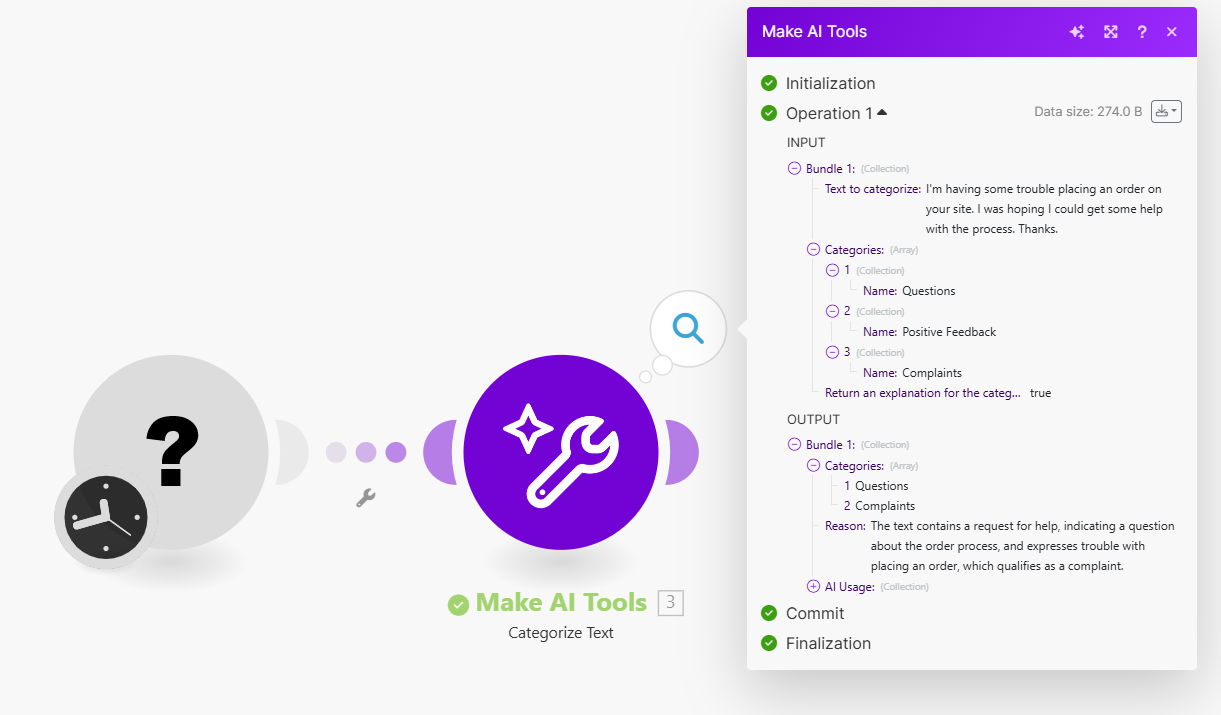
Detects the language that text is written in.
Text to identify | Enter text to identify the language. |
Example
You many need to determine the language of a text to ensure that a request is forwarded to the proper team. In this example, we have a text that was correctly identified as being written in Czech.
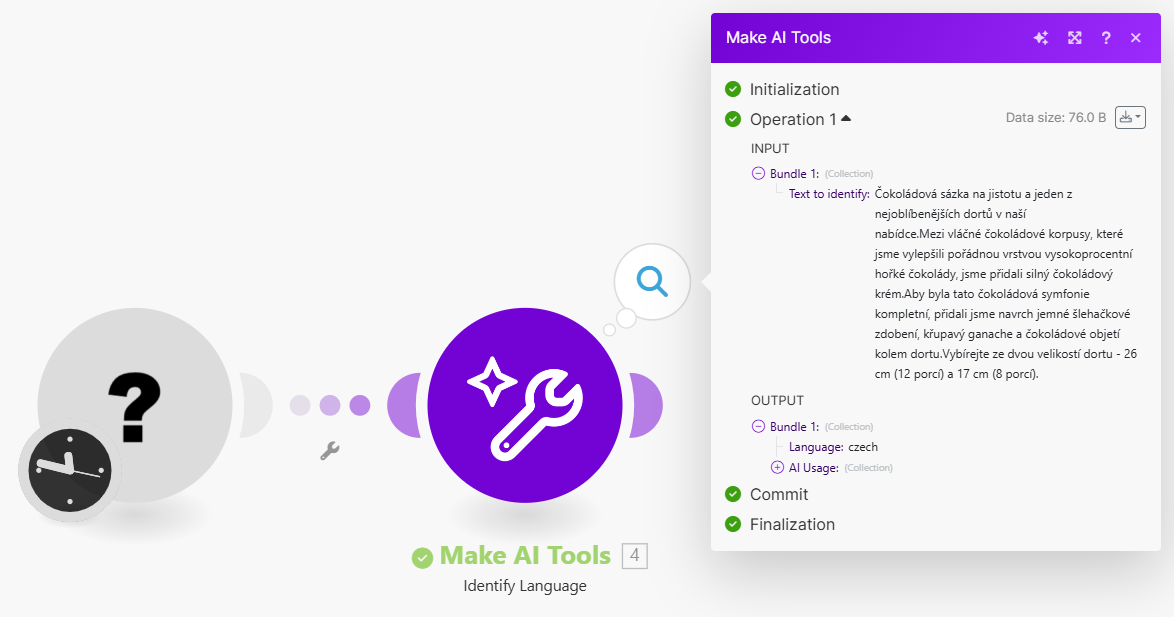
Retrieves information that you specify from a text.
Text | Enter text to extract information from. | ||||||
Information | Add items to extract from the text.
|
Example:
You may have a text or customer feedback that has a lot of extraneous information. In this example, we have identified the key information we need to extract: Order Number, Order Date, Customer Name, and Problem. The result is a bundle that identifies the important points as defined.
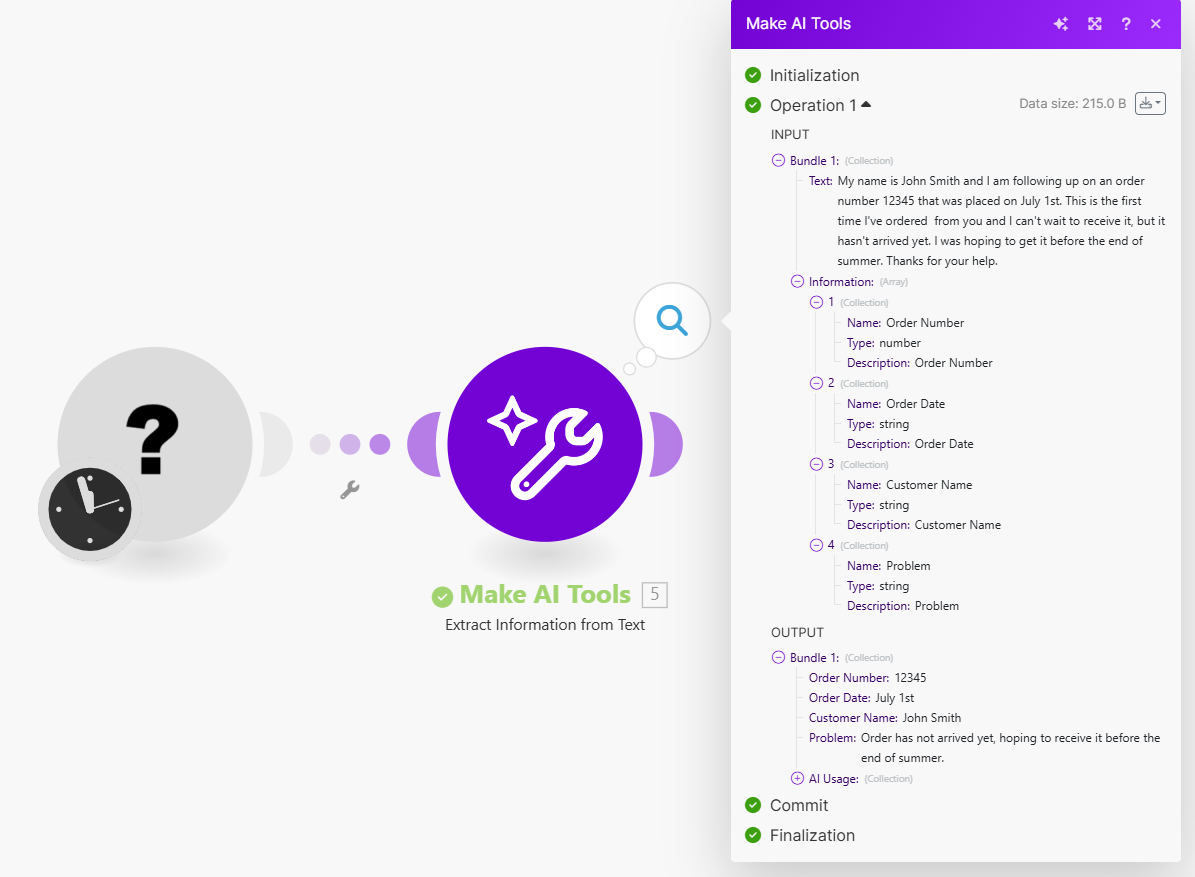
Adjusts the style and format of text to ensure it's consistent.
Text to standardize | Enter text to standardize the format and style. |
Example:
The original text mixes up forms of the verbs, creating awkward directions that are difficult to read. The result standardizes the text for better flow.

Condenses longer text into a shorter summary.
Text to summarize | Enter the text to create a summary. |
Example:
This module accepts any text as an input and outputs a bundle with a summary of the content.
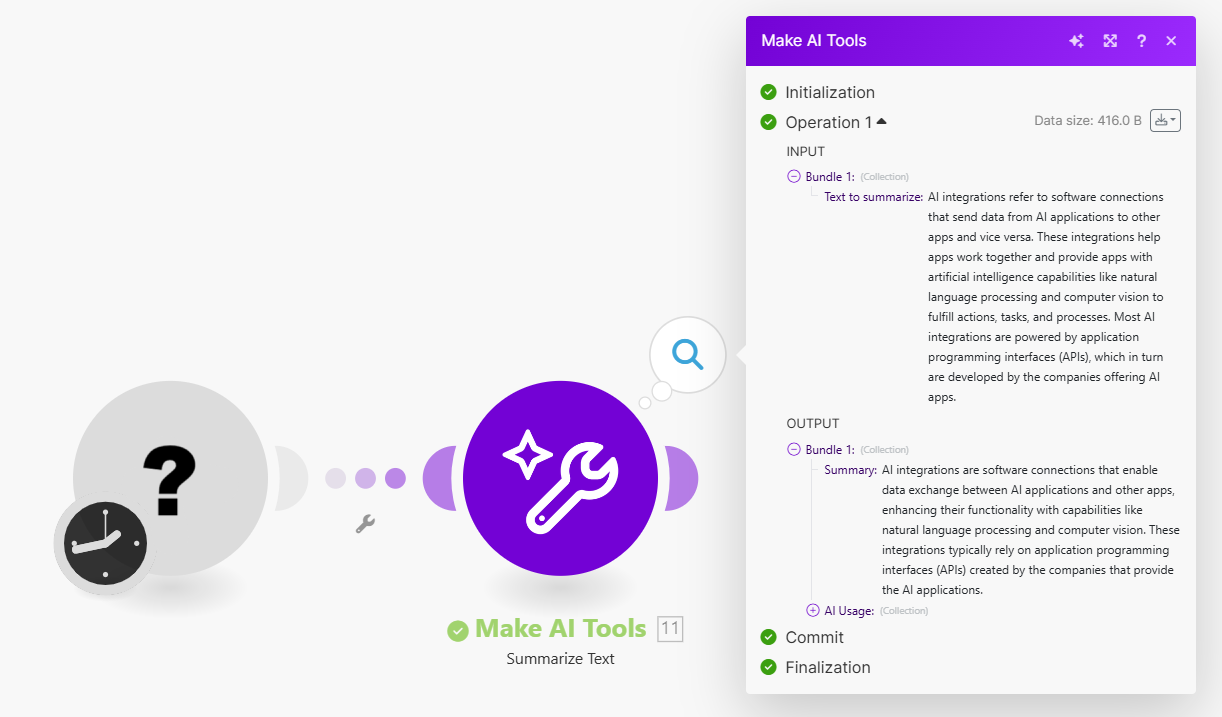
Translate text from one language into another.
Text to translate | Enter the text of any common language to create a translation. |
Target language | Enter the language to translate the text into. |
Example:
The text from the previous module bundle output, a summary of an article, was used as the input text for this Translate Text module.
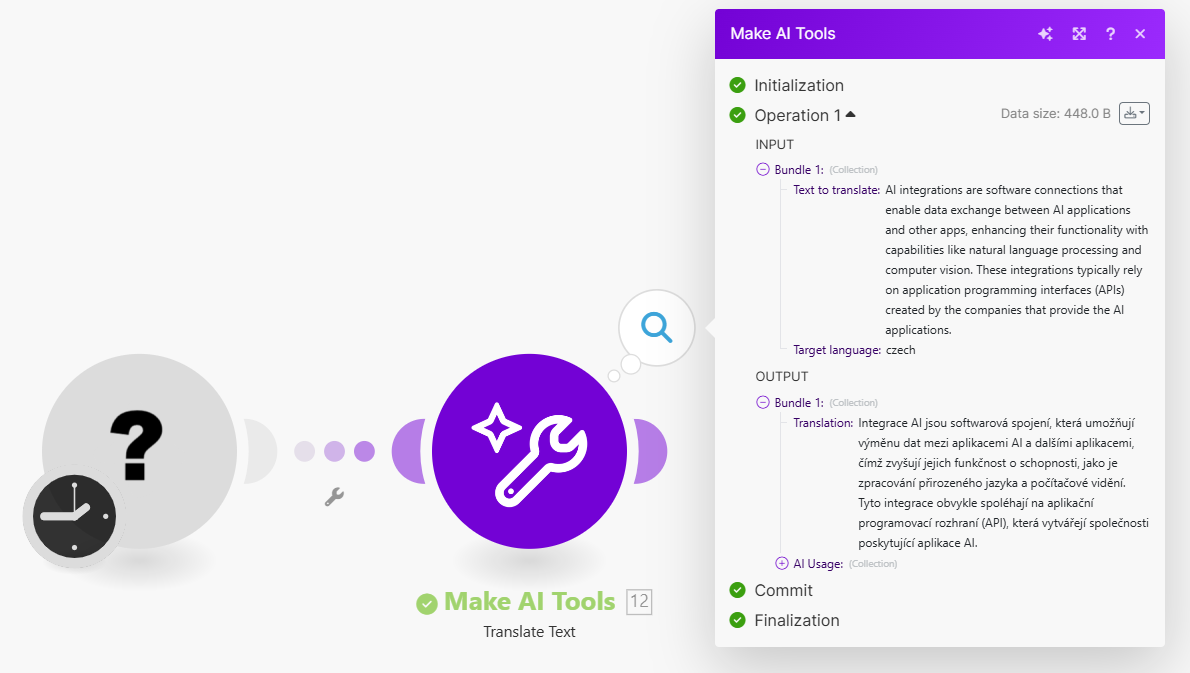
Advanced AI
Splits text into smaller, more manageable pieces known as chunks.
Text to chunk | Enter text to split into smaller chunks. The chunks are based on a number of tokens, which is how AI measures size. |
Chunk size | Enter the number of tokens to use in each chunk. |
Chunk overlap | Enter the number of tokens to use for text to overlap at the beginning and end of chunks. If you don't want any text to overlap, enter |
Example:
It is sometimes necessary to split text into smaller bundles, as AI often has token limitations. This module allows you to split your text into chunks that are more manageable.
This text is approximately 600 characters, which is equal to about 131 tokens.
With a chunk size of 50 and no overlap, the result is three bundles of text.
For more information on counting tokens, see the OpenAI Tokenizer.
